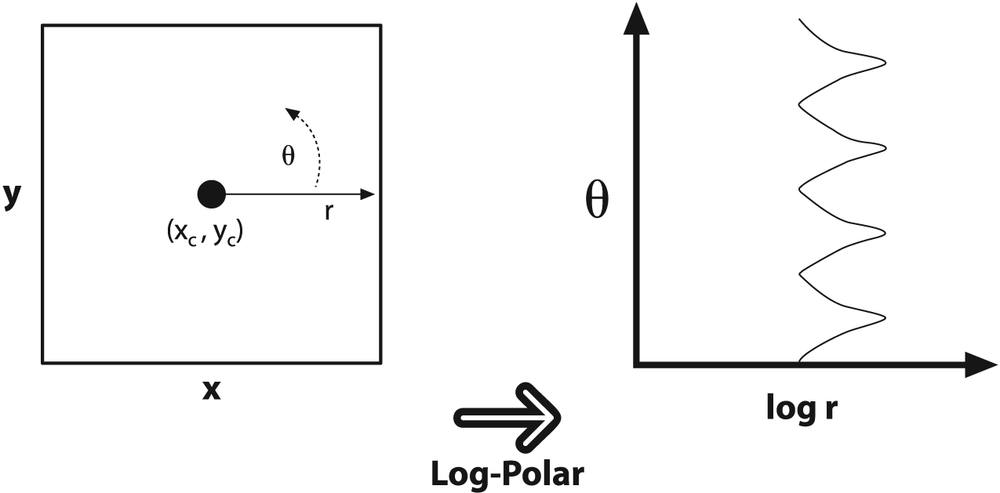LogPolar
For two-dimensional images, the log-polar transform [Schwartz80] is a change from Cartesian to polar coordinates:

, where

and

. Next, to separate out the polar coordinates into a (Ï, θ) space that is relative to some center point (xc, yc), we take the log so that

and

. For image purposesâwhen we need to "fit" the interesting stuff into the available image memoryâwe typically apply a scaling factor m to Ï. Figure 6-15 shows a square object on the left and its encoding in log-polar space.

Figure 6-15. The log-polar transform maps (x, y) into (log(r),θ); here, a square is displayed in the log-polar coordinate system
The next question is, of course, "Why bother?" The log-polar transform takes its inspiration from the human visual system. Your eye has a small but dense center of photoreceptors in its center (the fovea), and the density of receptors fall off rapidly (exponentially) ...
Get Learning OpenCV now with the O’Reilly learning platform.
O’Reilly members experience books, live events, courses curated by job role, and more from O’Reilly and nearly 200 top publishers.

